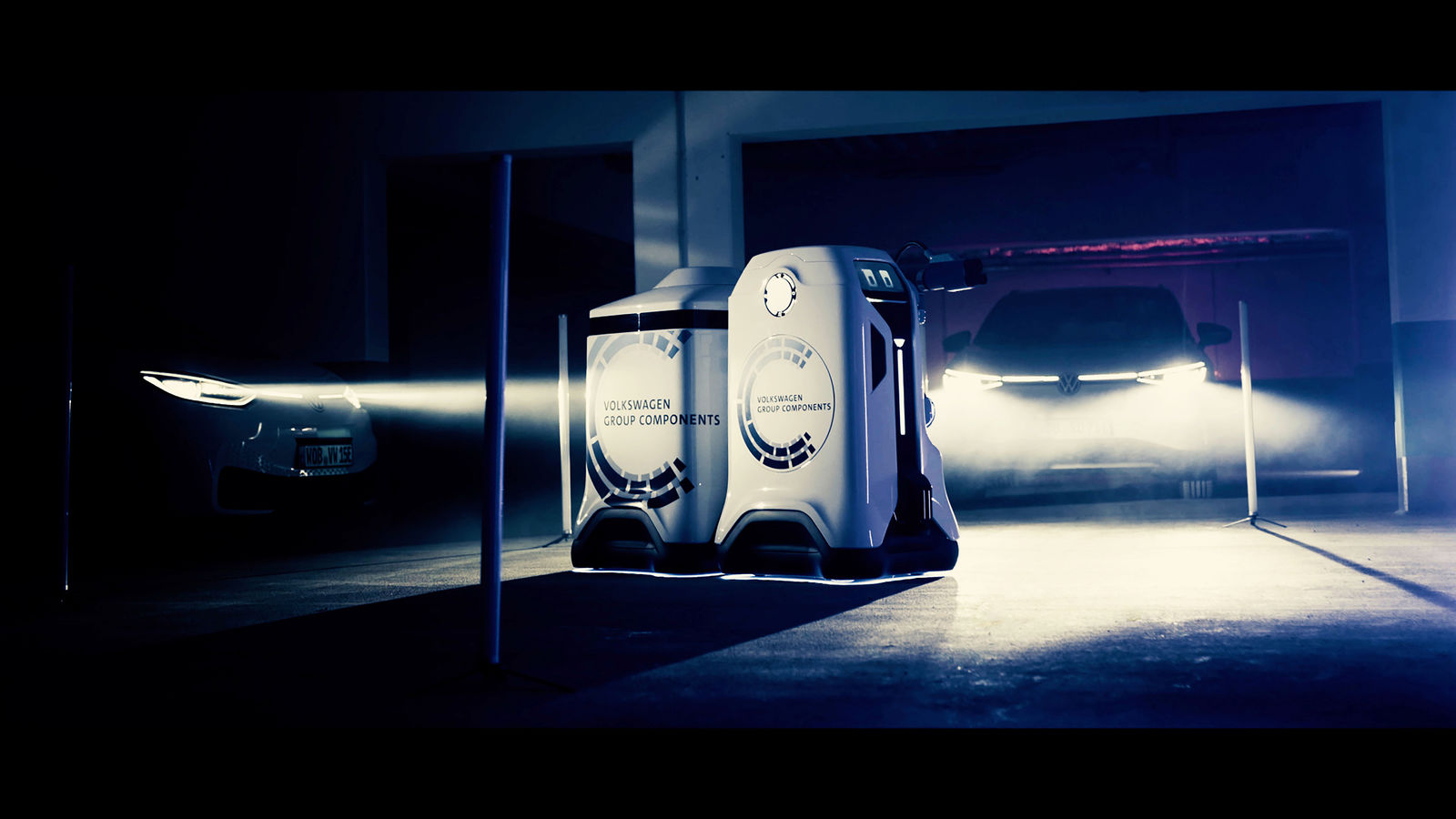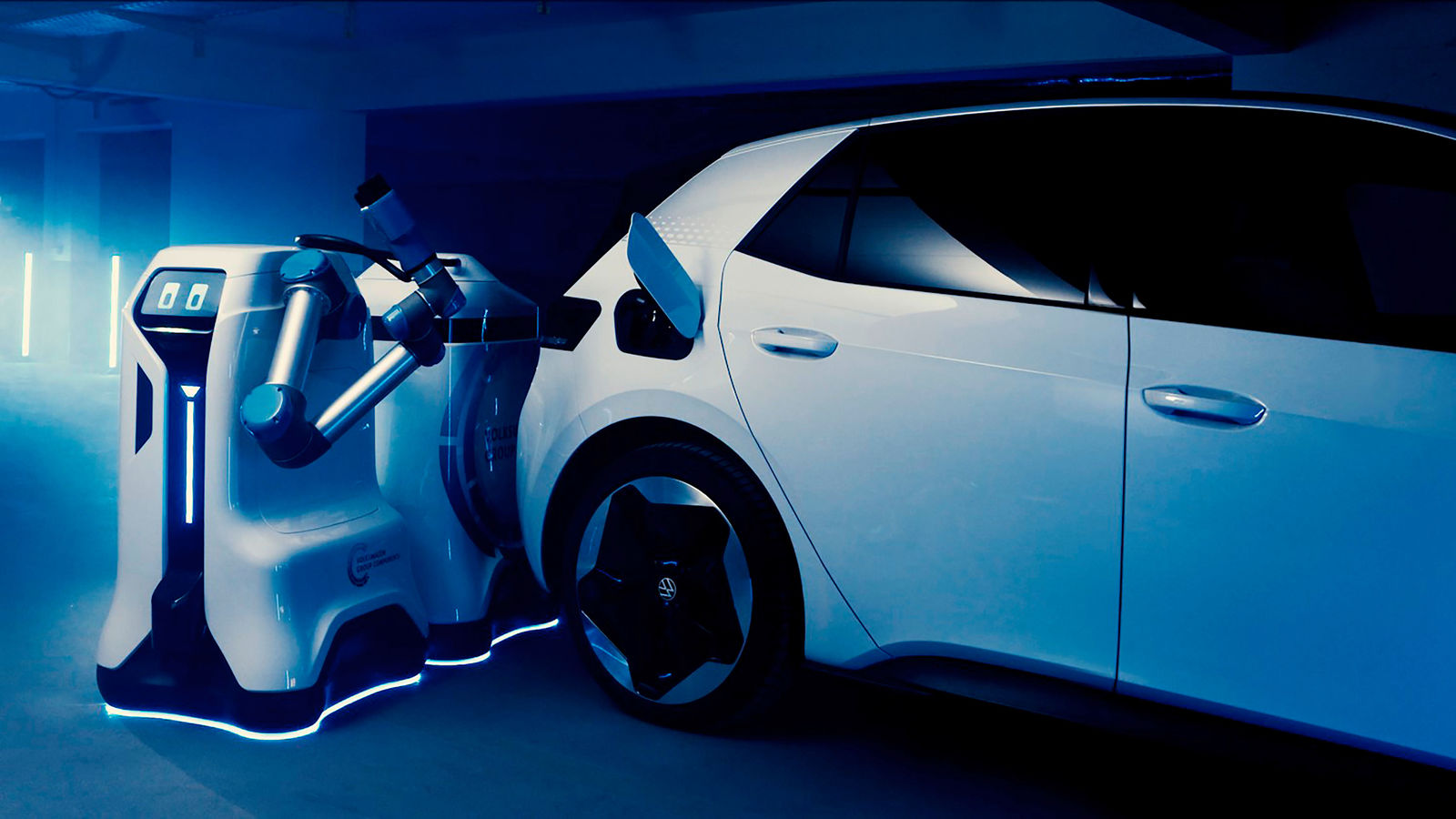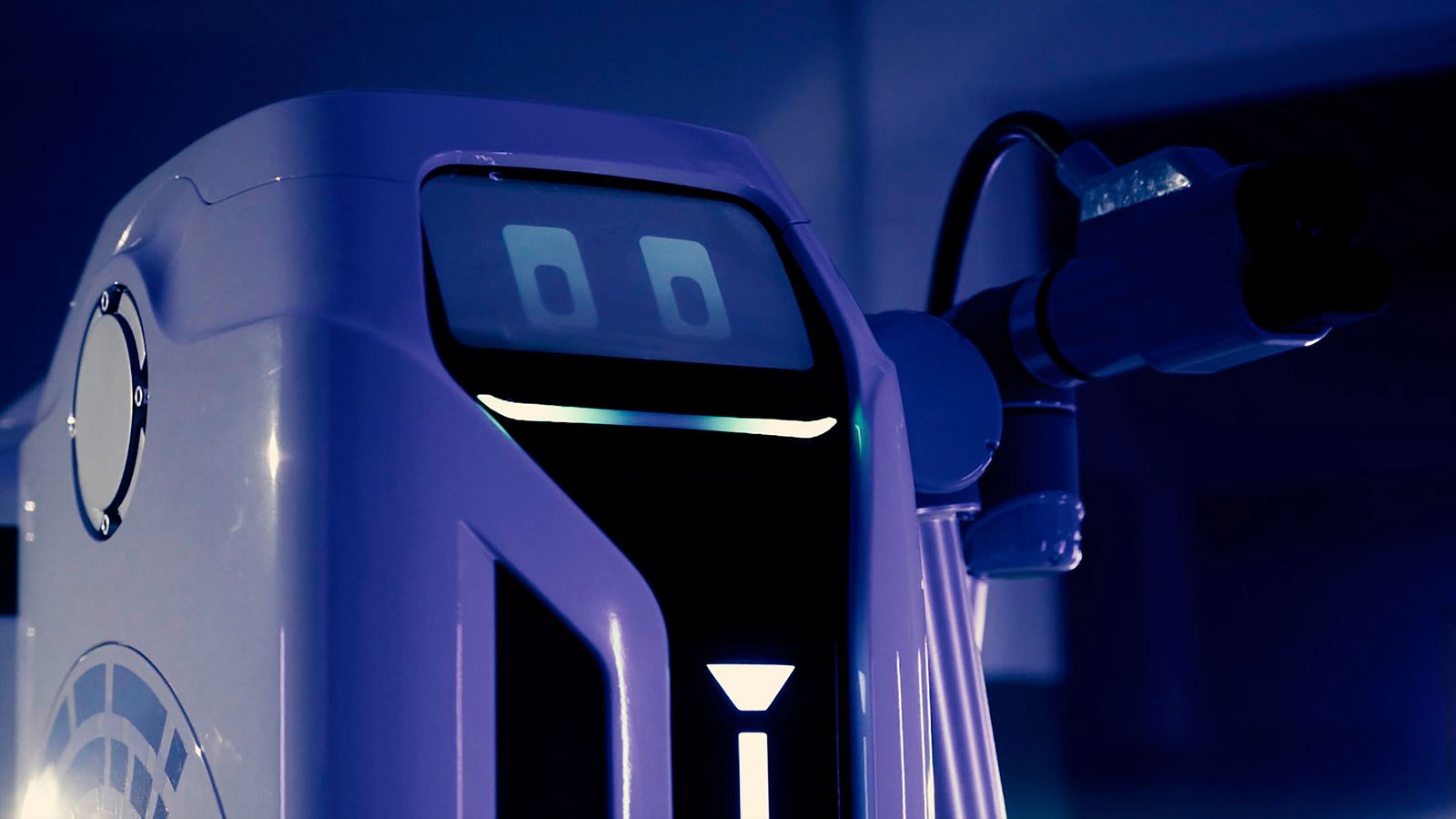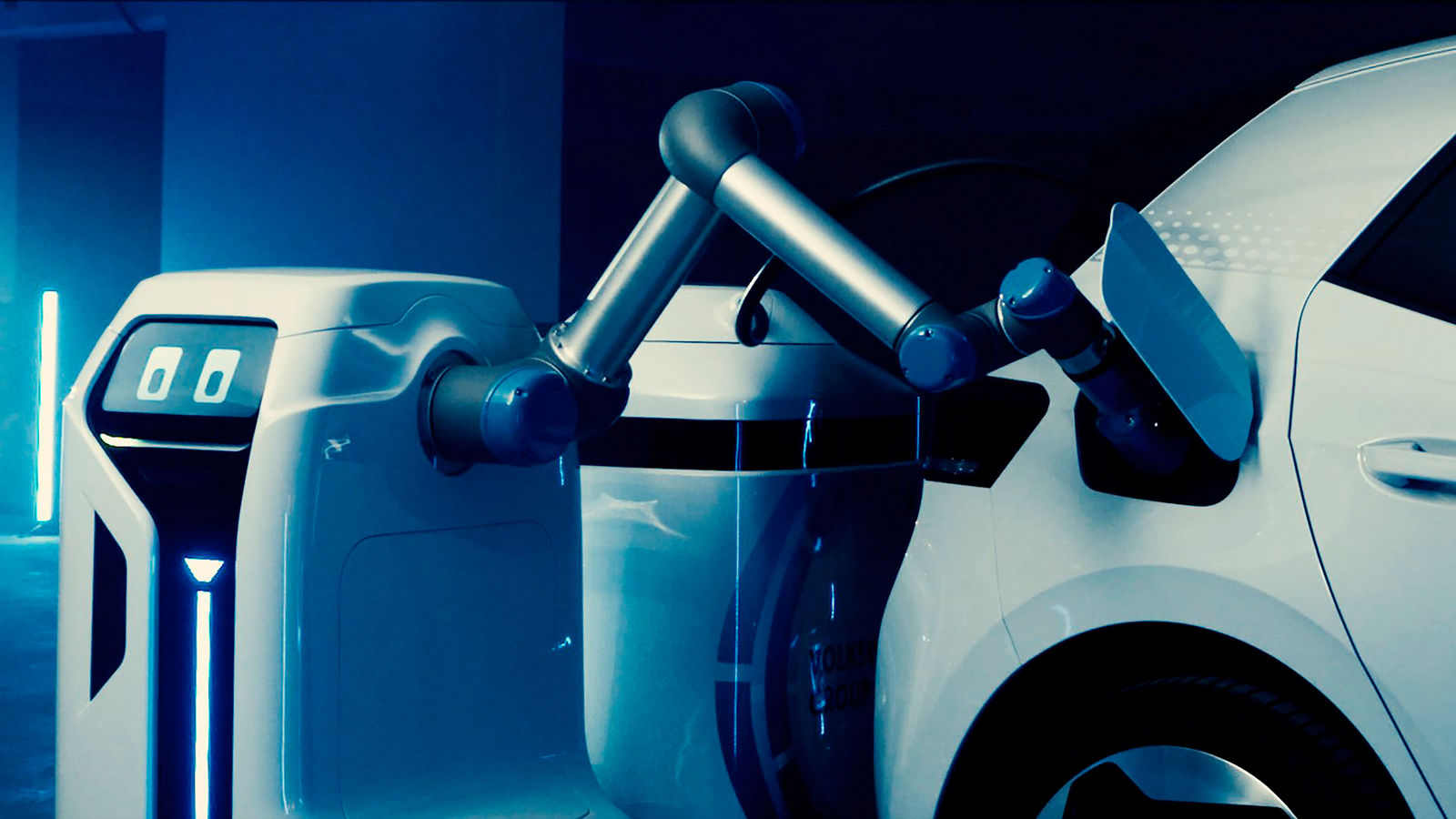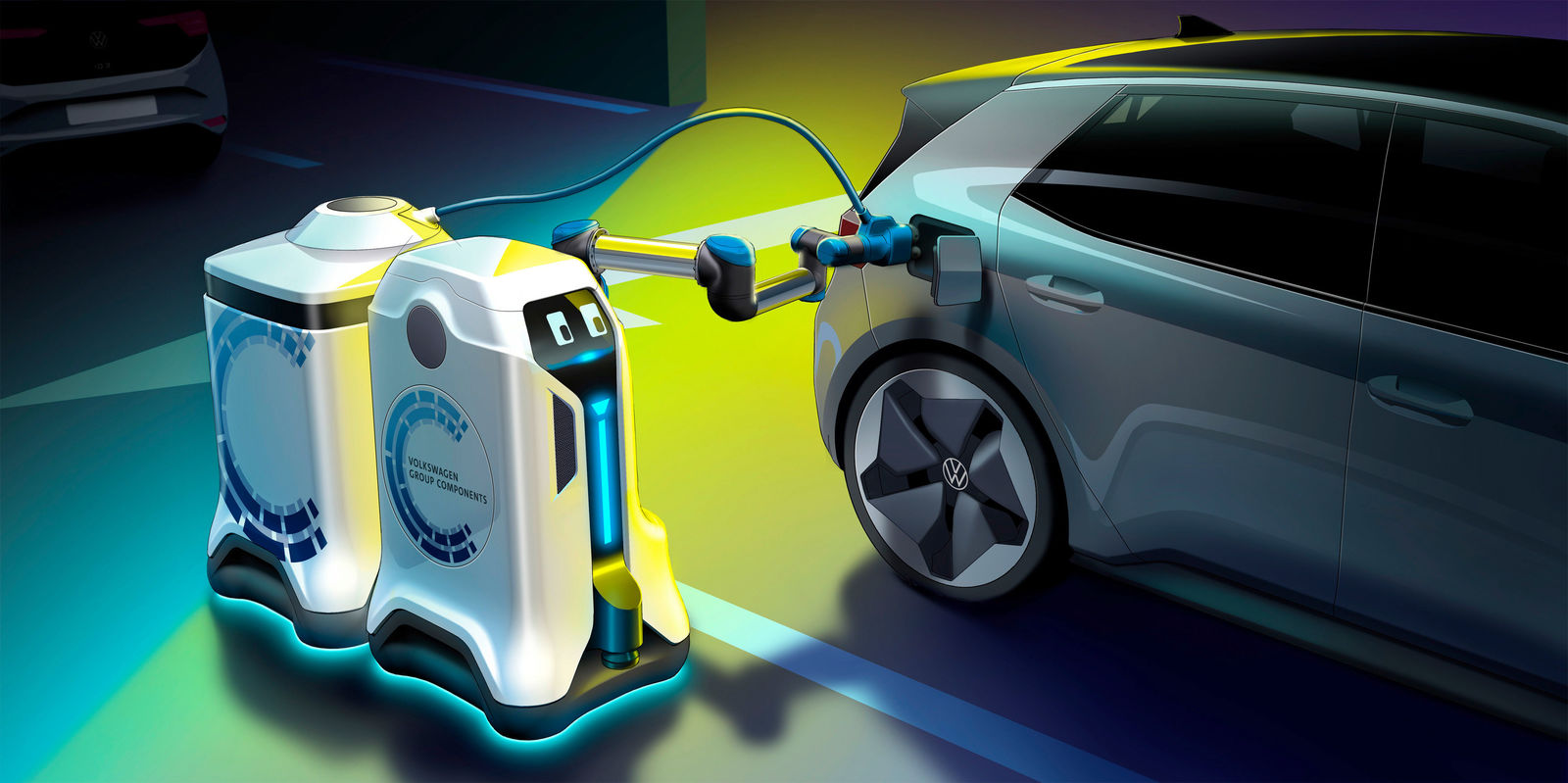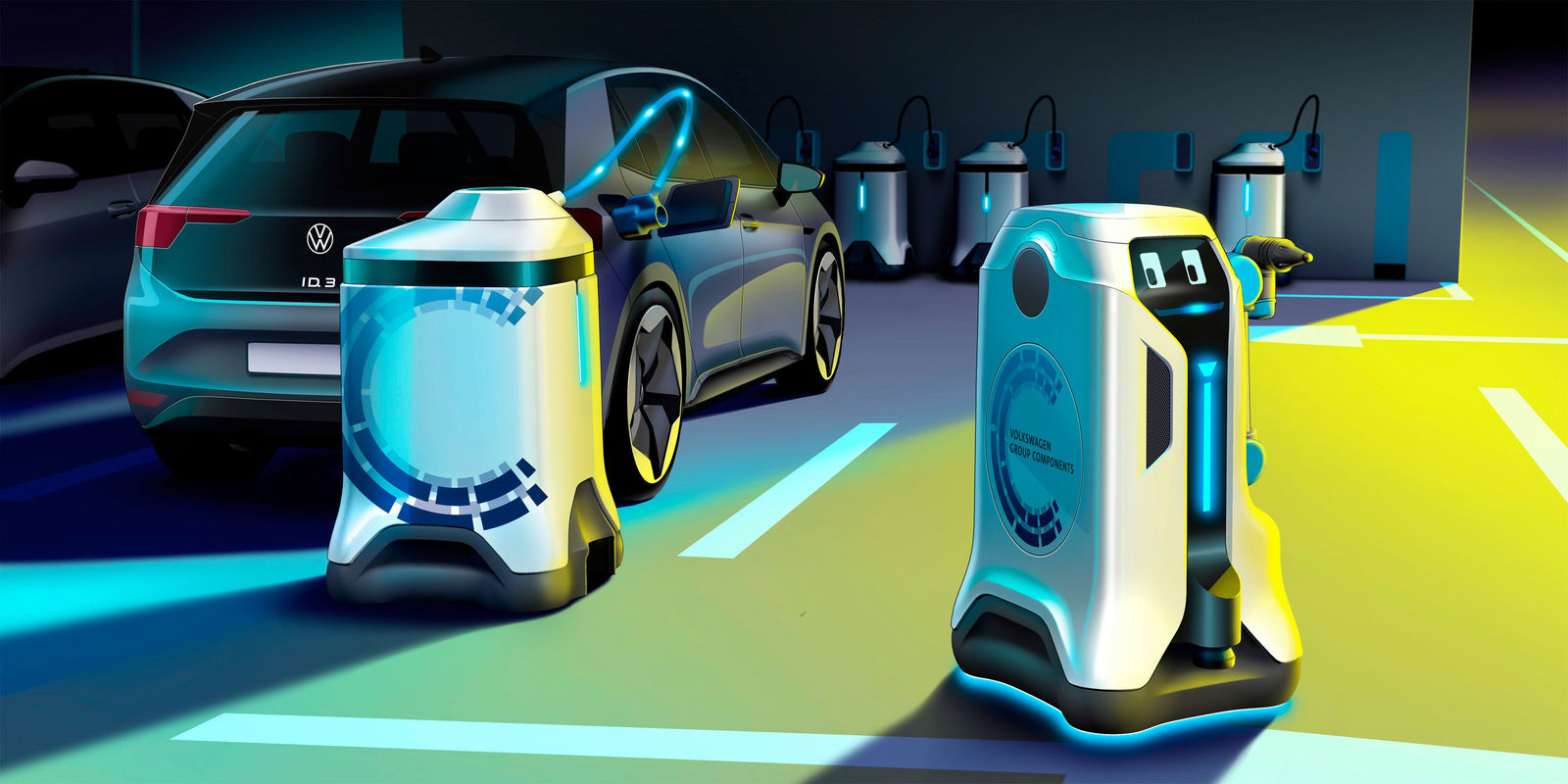Fully autonomous charging
The charging robot – started via an app or Car-to-X communication – operates totally autonomously. It independently steers the vehicle to be charged and communicates with it: from opening the charging socket flap to connecting the plug and decoupling it. The entire charging process takes place without any human involvement whatsoever. To charge several vehicles at the same time, the mobile robot moves a trailer, essentially a mobile energy storage unit, to the vehicle, connects it up and then uses this energy storage unit to charge the battery of the electric vehicle. The energy storage unit stays with the vehicle during the charging process. In the meantime, the robot charges other electric vehicles. Once the charging service has ended, the robot independently collects the mobile energy storage unit and takes it back to the central charging station.
According to Thomas Schmall, CEO of Volkswagen Group Components: “Setting up an efficient charging infrastructure for the future is a central task that challenges the entire sector. We are developing solutions to help avoid costly stand-alone measures. The mobile charging robot and our flexible quick-charging station are just two of these solutions.” The business unit is currently working on a complete DC charging family. The flexible quick-charging station will be launched onto the market in early 2021. For several weeks now, the DC wallbox has been trialled at different company’s German production sites. The mobile charging robot has successfully reached prototype status and will now be comprehensively further developed. One of the prerequisites for market maturity is Car-to-X communication to facilitate the autonomous charging process.
In view of the crucial importance of this issue, in future Volkswagen Group Components will be amongst other things responsible for all Volkswagen Group charging activities and charging systems. The intention is to integrate the charging robot into an overall concept that will focus on the long-term success of electric mobility, and thus the electrification of transport. “Establishing a charging infrastructure is a fundamental prerequisite for this. But it needs to be demand-led and efficient,” continues Schmall. “Our developments do not just focus on customers’ needs and the technical prerequisites of electric vehicles. They also consider the economical possibilities they offer potential partners.” They enable the operators of parking bays and underground car parks to quickly and simply “electrify” every parking space using the mobile charging robot. This reduces any construction work needed, at the same time reducing the potential cost.









